9 Orange Birds In Minnesota
In Minnesota, the presence of orange birds adds a vibrant touch to the state’s diverse avian population. Here are nine birds with orange plumage that you might encounter in Minnesota:
1. Baltimore Oriole (Icterus galbula)
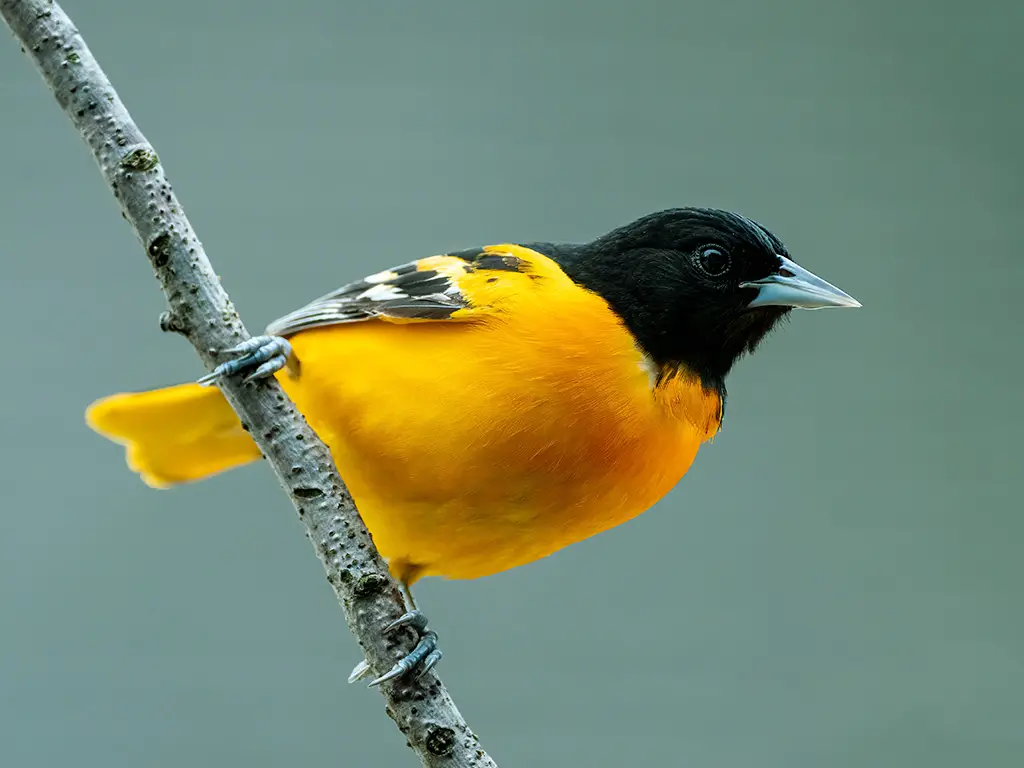
The Baltimore Oriole, Icterus galbula, is a vibrant bird known for its striking orange and black plumage. Males have a bold orange underpart, shoulders, and rump, with a black head and back.
Females are more muted, with yellowish-orange shades and a brownish-black back. Found primarily in the eastern and central United States, these birds migrate to Central and South America for the winter.
They are often seen in open woodlands, gardens, and parks, building distinctive hanging nests. Baltimore Orioles have a sweet, flute-like song and are known to feed on insects, fruit, and nectar, often visiting fruit feeders and nectar feeders in gardens.
| Kingdom | Animalia |
| Phylum | Chordata |
| Clade | Dinosauria |
| Class | Aves |
| Order | Passeriformes |
| Family | Icteridae |
| Genus | Icterus |
| Species | I. galbula |
2. American Robin (Turdus migratorius)
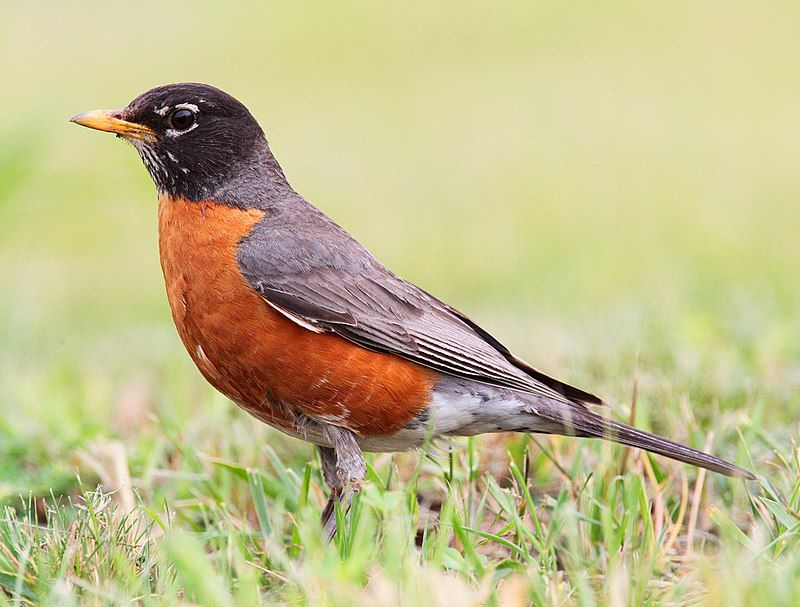
The American Robin, Turdus migratorius, is a common sight across North America. Recognizable by its round body, long legs, and red-orange breast, it’s a familiar bird in gardens, parks, and lawns.
These birds are among the first to sing with a melodious, warbling song at dawn. American Robins are adaptable and feed on various foods, including worms, insects, and fruit.
They are known for running and stopping on lawns as they hunt for earthworms. Their presence is often associated with the arrival of spring, although many robins also remain in their breeding range year-round.
| Kingdom | Animalia |
| Phylum | Chordata |
| Clade | Dinosauria |
| Class | Aves |
| Order | Passeriformes |
| Family | Turdidae |
| Genus | Turdus |
| Species | T. migratorius |
3. Icterids (Family: Icteridae)
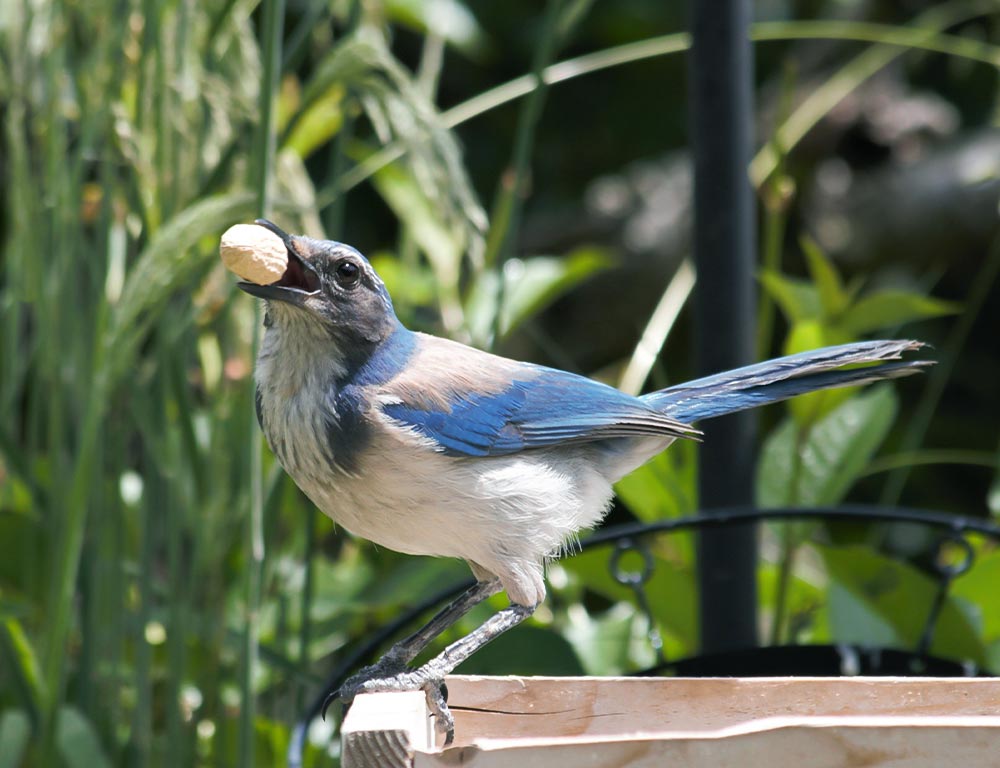
Icterids, belonging to the family Icteridae, include various species like blackbirds, grackles, orioles, and cowbirds. These birds are found throughout the Americas and are known for their diverse sizes, shapes, and behaviors.
They typically have strong, pointed bills and are often black with iridescent plumage, although some, like orioles, display bright colors. Icterids inhabit various environments, from marshes to forests to urban areas.
They are often social birds, forming large flocks, especially in non-breeding seasons. Their diets vary widely, including insects, seeds, and fruit. Many species of Icterids are known for their complex and varied songs and calls.
| Kingdom | Animalia |
| Phylum | Chordata |
| Clade | Dinosauria |
| Class | Aves |
| Order | Passeriformes |
| Family | Icteridae |
4. Blackburnian Warbler (Setophaga fusca)
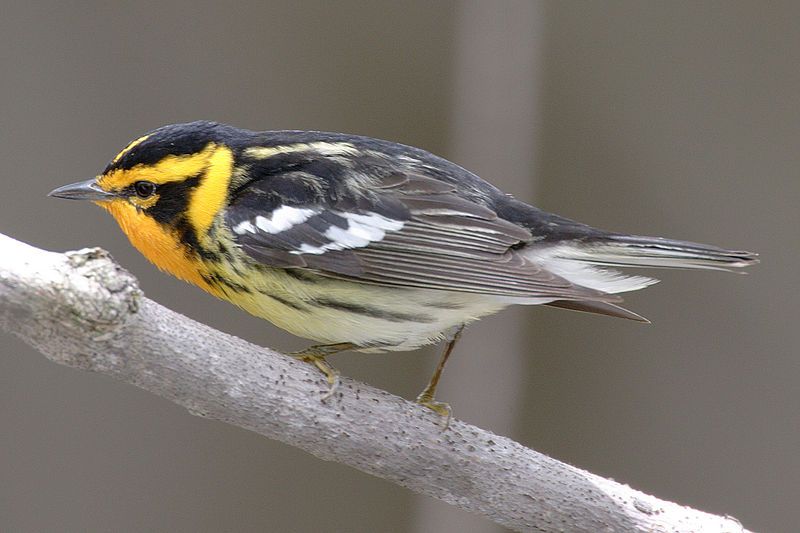
The Blackburnian Warbler, Setophaga fusca, is a small songbird known for its striking plumage. Males have a fiery orange throat and face, contrasting with their black and white bodies, making them one of the most vividly colored warblers.
Females and juveniles are more subdued, with yellowish throats and cheeks. These birds breed in coniferous and mixed forests in the northeastern United States and Canada, migrating to South America for winter.
They are insectivorous, often foraging high in the tree canopy. The Blackburnian Warbler’s song is a high-pitched series of notes, adding to the vibrant soundscape of the forests they inhabit.
| Kingdom | Animalia |
| Phylum | Chordata |
| Clade | Dinosauria |
| Class | Aves |
| Order | Passeriformes |
| Family | Parulidae |
| Genus | Setophaga |
| Species | S. fusca |
5. Eastern Towhee (Pipilo erythrophthalmus)
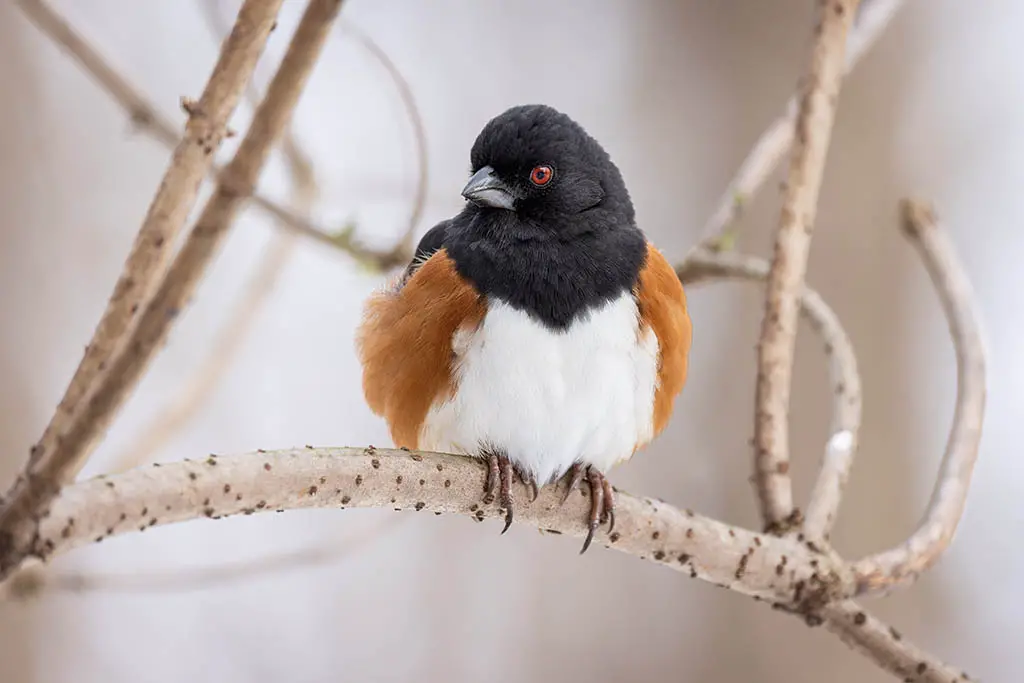
| Kingdom | Animalia |
| Phylum | Chordata |
| Clade | Dinosauria |
| Class | Aves |
| Order | Passeriformes |
| Family | Passerellidae |
| Genus | Pipilo |
| Species | P. erythrophthalmus |
6. Orchard Oriole (Icterus spurius)
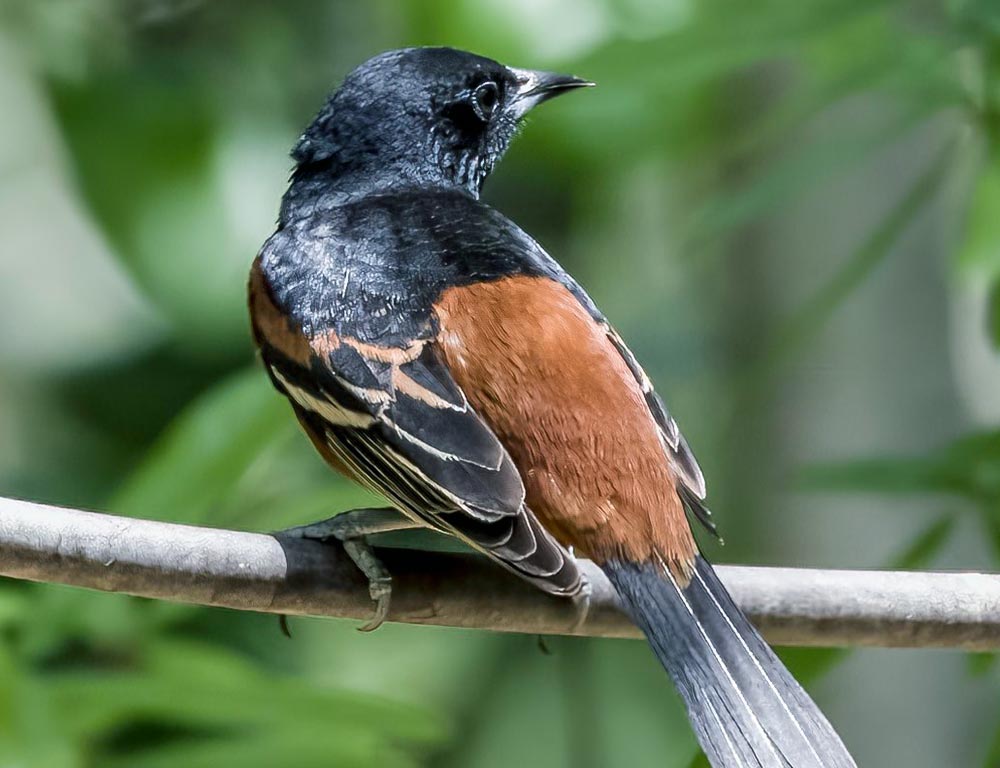
The Orchard Oriole, Icterus spurius, is a small blackbird family member and the smallest North American oriole. The male has a distinctive appearance with a deep chestnut and black plumage, while the female and immature males are yellowish-green and brown.
They breed in open woodlands and orchards across eastern North America, wintering in Central America. Orchard Orioles are known for their sweet and varied songs and whistles. They build woven, hanging nests, often in colonies.
Their diet consists mainly of insects and nectar, making them beneficial for controlling pest populations and pollinating flowers. The Orchard Oriole’s vibrant colors and melodious songs make it a delightful sight in its habitat.
| Kingdom | Animalia |
| Phylum | Chordata |
| Clade | Dinosauria |
| Class | Aves |
| Order | Passeriformes |
| Family | Icteridae |
| Genus | Icterus |
| Species | I. spurius |
7. Carolina Wren (Thryothorus ludovicianus)
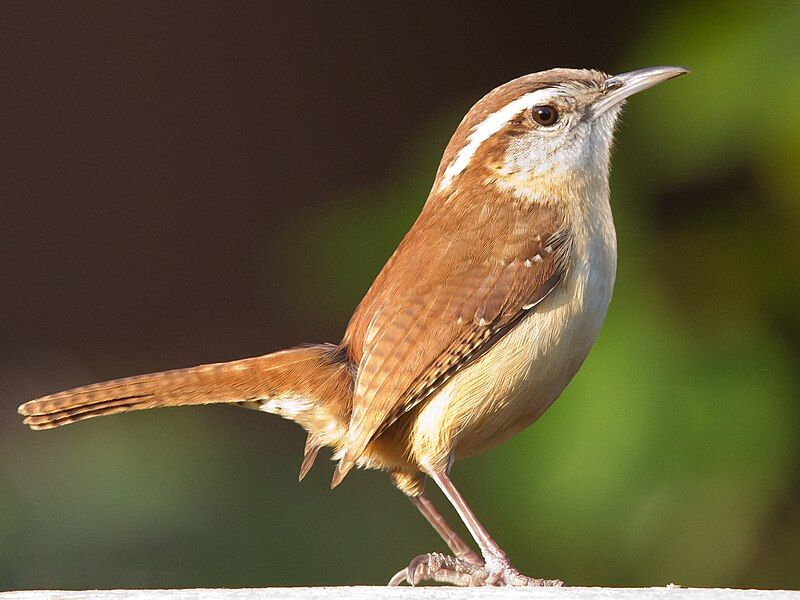
The Carolina Wren, Thryothorus ludovicianus, is a small but dynamic bird known for its loud and persistent song, often heard as a clear “teakettle-teakettle-teakettle.” This wren has rich cinnamon plumage, a white eyebrow stripe, and a long, upward-cocked tail.
Carolina Wrens are adaptable and curious, often exploring human-made structures for food or nesting sites. They primarily inhabit wooded areas, gardens, and suburban environments in the southeastern United States.
Their diet mainly consists of insects, spiders, and occasionally seeds and fruit. The Carolina Wren is known for being especially vocal, with various calls and songs that enliven its surroundings.
| Kingdom | Animalia |
| Phylum | Chordata |
| Clade | Dinosauria |
| Class | Aves |
| Order | Passeriformes |
| Family | Troglodytidae |
| Genus | Thryothorus |
| Species | T. ludovicianus |
8. American Woodcock (Scolopax minor)
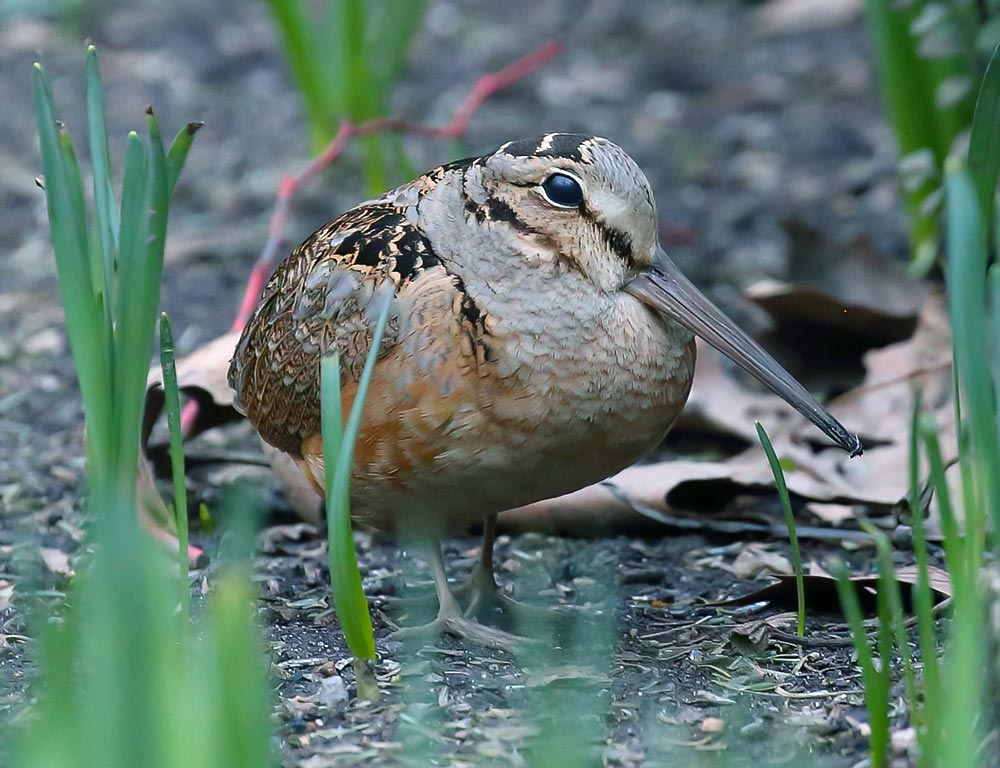
The American Woodcock, Scolopax minor, is a unique shorebird that thrives in forested habitats far from shorelines. It’s known for its plump body, short legs, and long, straight bill, which it uses to probe soft soil for earthworms.
The woodcock has cryptic brown, black, and gray plumage, providing excellent camouflage among the forest floor. A remarkable aspect of their behavior is the male’s “sky dance” during breeding season: a dazzling display of flight at dawn and dusk.
Woodcocks are most commonly found in the eastern United States, inhabiting young forests and thickets. Despite their elusive nature, their distinctive peent call often gives away their presence.
| Kingdom | Animalia |
| Phylum | Chordata |
| Clade | Dinosauria |
| Class | Aves |
| Order | Charadriiformes |
| Family | Scolopacidae |
| Genus | Scolopax |
| Species | S. minor |
9. American Kestrel (Falco sparverius)
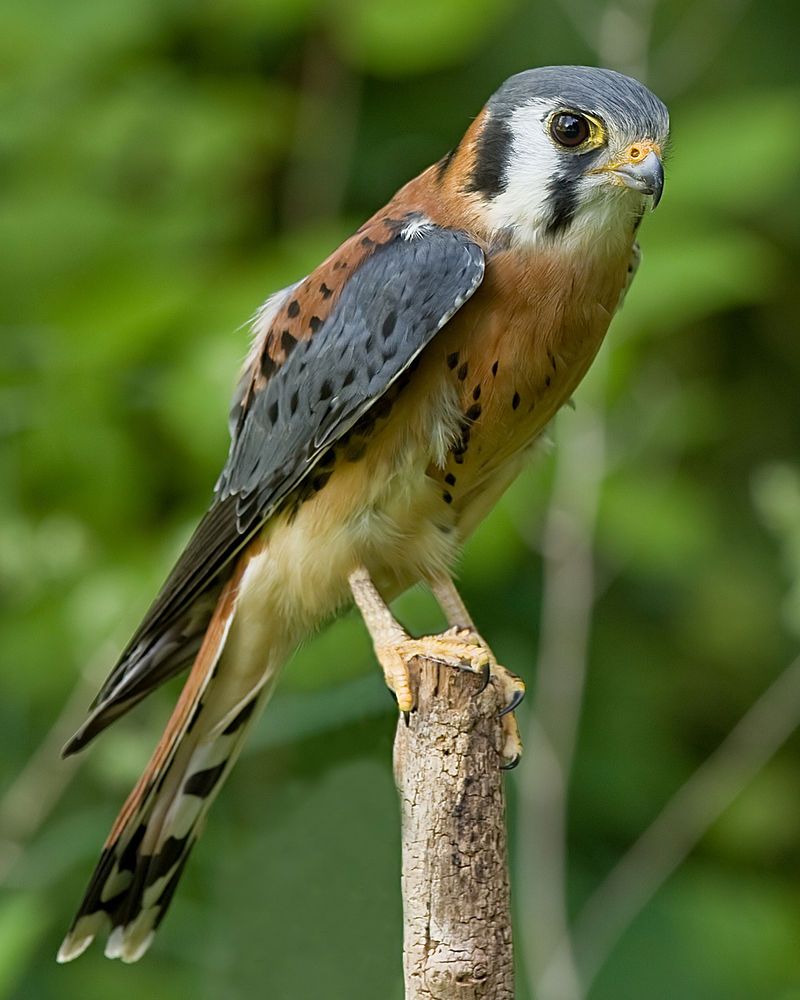
| Kingdom | Animalia |
| Phylum | Chordata |
| Clade | Dinosauria |
| Class | Aves |
| Order | Falconiformes |
| Family | Falconidae |
| Genus | Falco |
| Species | F. sparverius |